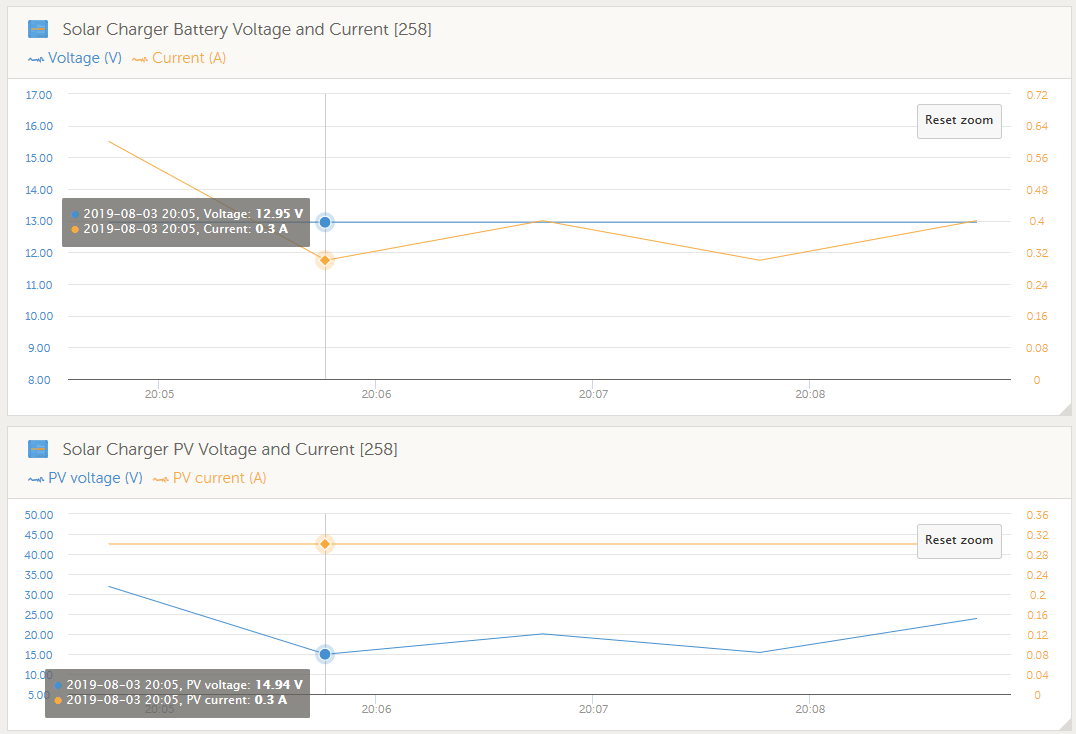The manual of the MPPT states that the Vpv start voltage should be 5V above Vbat. That is not problem. After starting Vpv should stay 1V above Vbat to keep charging.
"● PV voltage must exceed Vbat + 5V for the controller to start. Thereafter minimum PV
voltage is Vbat + 1V."
What i see in the VE connect app is that the MPPT always keeps Vpv aprox. 5V above Vbat.
This causes the battery to not charge completely.

